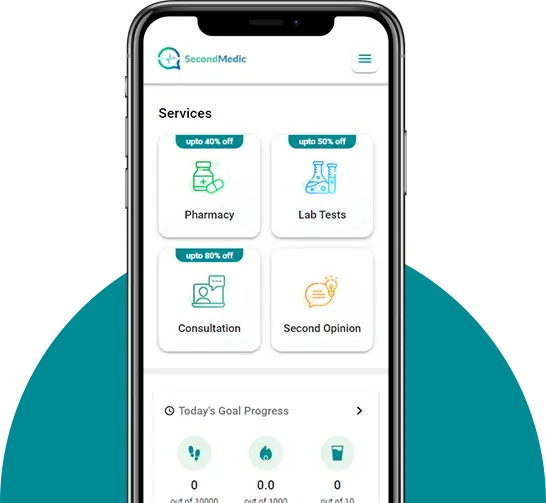- Published on: Oct 21, 2023
- 5 minute read
- By: Secondmedic Expert
The Silent Threat: How Air Pollution Affects Our Health
Introduction
Air pollution, often referred to as the silent killer, is a pressing global issue that poses a significant threat to human health and the environment. In this blog, we will delve into the various dimensions of air pollution, examining its detrimental effects on health, its consequences on the environment, and the importance of addressing this pervasive issue. As we explore the types of pollution and the diseases caused by air pollution, it becomes evident that we must take action to improve air quality and safeguard our well-being.
Understanding Air Pollution
Air pollution is a complex mixture of various pollutants, both natural and human-made, that contaminate the air we breathe. These pollutants can be broadly categorized into two main types: primary pollutants and secondary pollutants.
Primary pollutants are emitted directly into the air and include substances like sulfur dioxide (SO2), nitrogen oxides (NOx), carbon monoxide (CO), volatile organic compounds (VOCs), and particulate matter (PM). These pollutants originate from various sources such as vehicle emissions, industrial processes, and power plants.
Secondary pollutants, on the other hand, are formed in the atmosphere when primary pollutants undergo chemical reactions. Common secondary pollutants include ground-level ozone (O3) and fine particulate matter (PM2.5).
Effects of Air Pollution on Health
Air pollution has profound and wide-ranging effects on human health. The repeated exposure to polluted air can lead to a range of health problems, including respiratory issues, cardiovascular diseases, and even adverse effects on mental well-being.
1. Respiratory Effects: Air pollution is a potent adversary to our respiratory health. Particulate matter (PM2.5 and PM10) and ground-level ozone are some of the major culprits. When these pollutants enter our airways, they can trigger inflammation and irritation. Over time, this continuous exposure can lead to aggravated asthma symptoms, persistent bronchitis, and an increased risk of respiratory infections. Notably, it isn't only limited to short-term discomfort; prolonged exposure to such pollutants can result in chronic respiratory conditions and reduced lung function. This is particularly concerning for children, as their lungs are still developing, and exposure to polluted air can impair their long-term lung growth..
2. Cardiovascular Effects: Air pollution doesn't discriminate; it adversely affects not just our respiratory system but also our cardiovascular health. The inhalation of pollutants can have far-reaching consequences. For instance, it elevates the risk of heart attacks and strokes, as it contributes to arterial plaque buildup and inflammation. Long-term exposure to polluted air can result in chronic cardiovascular diseases, which are a leading cause of death worldwide. This underlines the need to address air pollution as a critical public health issue.
3. Mental Health Effects: Recent research has unveiled an intriguing link between air pollution and mental health. Exposure to polluted air has been associated with an increased risk of neurodevelopmental disorders, cognitive decline, and mental health conditions like depression and anxiety. While the precise mechanisms behind these connections are still under investigation, it is evident that air pollution's effects extend beyond the physical realm, affecting our mental well-being. This underscores the importance of clean air for holistic health.
Consequences of Air Pollution on the Environment
While the focus of this blog is primarily on human health, it's important to acknowledge the severe consequences of air pollution on the environment. Pollution is not confined to city limits; it has a global reach and affects ecosystems, wildlife, and the Earth's climate.
1. Climate Change: Air pollution doesn't merely affect human health; it plays a pivotal role in altering the Earth's climate. Carbon dioxide (CO2) and other greenhouse gases released into the atmosphere trap heat, contributing to global warming. This leads to rising global temperatures, a phenomenon that has far-reaching consequences, including the melting of polar ice caps, rising sea levels, and a heightened frequency of extreme weather events. Tackling air pollution becomes not only a health imperative but a fundamental necessity to combat climate change.
2. Ecosystem Damage: The detrimental effects of air pollution extend to ecosystems, impacting soil and water bodies. Pollutants such as sulfur dioxide (SO2) and nitrogen oxides (NOx) lead to the acidification of soils and water. This, in turn, harms plant life and aquatic ecosystems. Acid rain, a consequence of air pollution, can devastate forests, lakes, and rivers, jeopardizing biodiversity and disrupting ecosystems.
3. Loss of Biodiversity: Air pollution's impact on biodiversity cannot be underestimated. Pollutants like nitrogen oxides contribute to changes in terrestrial and aquatic ecosystems, promoting the overgrowth of certain plant species at the expense of others. This disruption to natural habitats can lead to a loss of biodiversity, affecting not only the organisms directly impacted by pollution but the entire food chain.
Diseases Caused by Air Pollution
The link between air pollution and diseases is becoming increasingly clear, with numerous studies highlighting the significant health risks associated with long-term exposure. Some of the diseases caused by air pollution include:
1. Lung Cancer: The connection between air pollution and lung cancer is a sobering one. Prolonged exposure to air pollutants, particularly fine particulate matter and benzene, significantly increases the risk of developing lung cancer. The World Health Organization (WHO) has classified outdoor air pollution as a Group 1 carcinogen, placing it in the same category as tobacco smoke and asbestos. This classification underscores the urgency of addressing air pollution to mitigate this deadly disease.
2. Chronic Obstructive Pulmonary Disease (COPD): Chronic Obstructive Pulmonary Disease (COPD) is a group of progressive lung diseases that includes chronic bronchitis and emphysema. Air pollution is a prominent risk factor for COPD. Inhaled pollutants lead to chronic inflammation in the airways, which can result in irreversible lung damage and the characteristic symptoms of COPD, such as shortness of breath and coughing.
3. Ischemic Heart Disease: Air pollution is a recognized contributor to ischemic heart disease, a leading cause of death globally. Fine particles in polluted air can penetrate the bloodstream, causing inflammation and the development of atherosclerosis, a condition where arteries become clogged with fatty deposits. This process increases the risk of heart attacks and other cardiovascular problems.
4. Childhood Respiratory Infections: Children are particularly vulnerable to the detrimental effects of air pollution. Exposure to pollutants can lead to frequent respiratory infections, which can have long-term health consequences. Early exposure to polluted air can hamper lung development, leading to lifelong respiratory issues.
Importance of Addressing Air Pollution
The importance of addressing air pollution cannot be overstated. It affects every facet of our lives, from our health and well-being to the environment and even our economy. Here are some compelling reasons to take action:
1. Public Health: Cleaner air translates to healthier lives. By reducing air pollution, we can prevent countless premature deaths and alleviate the suffering caused by respiratory and cardiovascular diseases. The importance of clean air for public health cannot be overstated.
2. Economic Impact: Air pollution imposes a significant economic burden. The costs associated with healthcare expenses, lost productivity due to illness, and decreased worker productivity are substantial. Addressing air pollution offers an opportunity for cost savings and economic growth through the development and adoption of cleaner technologies and practices.
3. Environmental Sustainability: Environmental sustainability is crucial for the long-term well-being of our planet. Reducing air pollution is an integral part of this effort, as it helps combat climate change and preserve ecosystems. By protecting our environment, we ensure a better future for all living creatures.
4. Global Responsibility: Air pollution is a global problem that knows no borders. Addressing it requires international cooperation and a shared sense of responsibility for the planet and its inhabitants. Recognizing air pollution as a global issue emphasizes the importance of working together to find solutions and mitigate its effects.
Air Quality and Monitoring
To combat air pollution effectively, it's essential to have reliable air quality monitoring systems in place. Governments and environmental agencies worldwide have established networks to measure the concentration of various pollutants in the air. This real-time data is used to inform the public about current air quality levels and provide guidance on when it's safe to be outdoors.
Recent technological innovations, such as low-cost sensors and satellite monitoring, have democratized access to air quality information. These tools empower individuals and communities to stay informed about the air they breathe and take proactive measures to protect their health and advocate for cleaner air.
Conclusion
In conclusion, air pollution is indeed a silent but pervasive threat that affects both human health and the environment. As we have seen in this comprehensive exploration, its effects are far-reaching and demand urgent attention.
The time has come for collective action. It is our shared responsibility to address air pollution, mitigate its detrimental effects on health and the environment, and strive for a cleaner, healthier, and more sustainable future. This means advocating for policies that reduce emissions, embracing cleaner technologies, and making conscious choices in our daily lives. By doing so, we can turn down the volume on the silent threat of air pollution and protect the air we all breathe.
Read FAQs
A. Air pollution affects our health in numerous ways. The various pollutants in the air, such as particulate matter (PM2.5 and PM10), ground-level ozone, nitrogen oxides (NOx), sulfur dioxide (SO2), carbon monoxide (CO), and volatile organic compounds (VOCs), can have direct and indirect impacts on our well-being. When we breathe in polluted air, these pollutants can enter our respiratory and cardiovascular systems, leading to a range of health issues. Long-term exposure to air pollution has been linked to respiratory diseases like asthma and bronchitis, cardiovascular diseases like heart attacks and strokes, and even mental health problems, including depression and anxiety.
A. Air pollution is often referred to as a silent killer because its adverse effects on health are insidious and not immediately noticeable. Unlike other threats, such as a loud noise or an aggressive predator, air pollution doesn't announce its presence with immediate, dramatic effects. Instead, it silently infiltrates the air we breathe, slowly but persistently damaging our health over time. This stealthy nature makes it a "silent" killer, as the harm it causes can go unnoticed until it's too late to prevent health problems.
A. Air pollution poses a significant threat to health for several compelling reasons. Firstly, it contributes to a wide range of health problems, including respiratory diseases, cardiovascular diseases, and mental health issues. Secondly, the health effects of air pollution are not limited to a specific group; everyone, from infants to the elderly, is vulnerable. Additionally, air pollution has both short-term and long-term consequences, impacting individuals' immediate well-being and leading to chronic health conditions. Furthermore, the consequences of air pollution extend beyond health and include economic costs, environmental degradation, and climate change. Addressing air pollution is imperative to safeguard public health and ensure the well-being of current and future generations.
A. Effects on Human Health: Air pollution impacts human health through the inhalation of harmful pollutants. Particulate matter (PM) can penetrate deep into the lungs, leading to respiratory issues like asthma and bronchitis, while ground-level ozone can cause lung irritation. Long-term exposure to air pollution can result in chronic health problems such as heart disease and reduced lung function. Additionally, emerging research suggests links between air pollution and mental health issues, including depression and cognitive decline. Effects on Non-living Things (Environment): Air pollution has severe consequences for non-living things and the environment. It can lead to acid rain, which harms soil and water bodies, causing damage to forests, lakes, and aquatic life. Pollutants like sulfur dioxide and nitrogen oxides contribute to the acidification of soils and water. Moreover, air pollution significantly contributes to climate change by releasing greenhouse gases like carbon dioxide (CO2). This leads to rising global temperatures, resulting in the melting of polar ice caps, sea-level rise, and more frequent and severe weather events. The effects on the environment are far-reaching and can disrupt ecosystems and lead to the loss of biodiversity.









